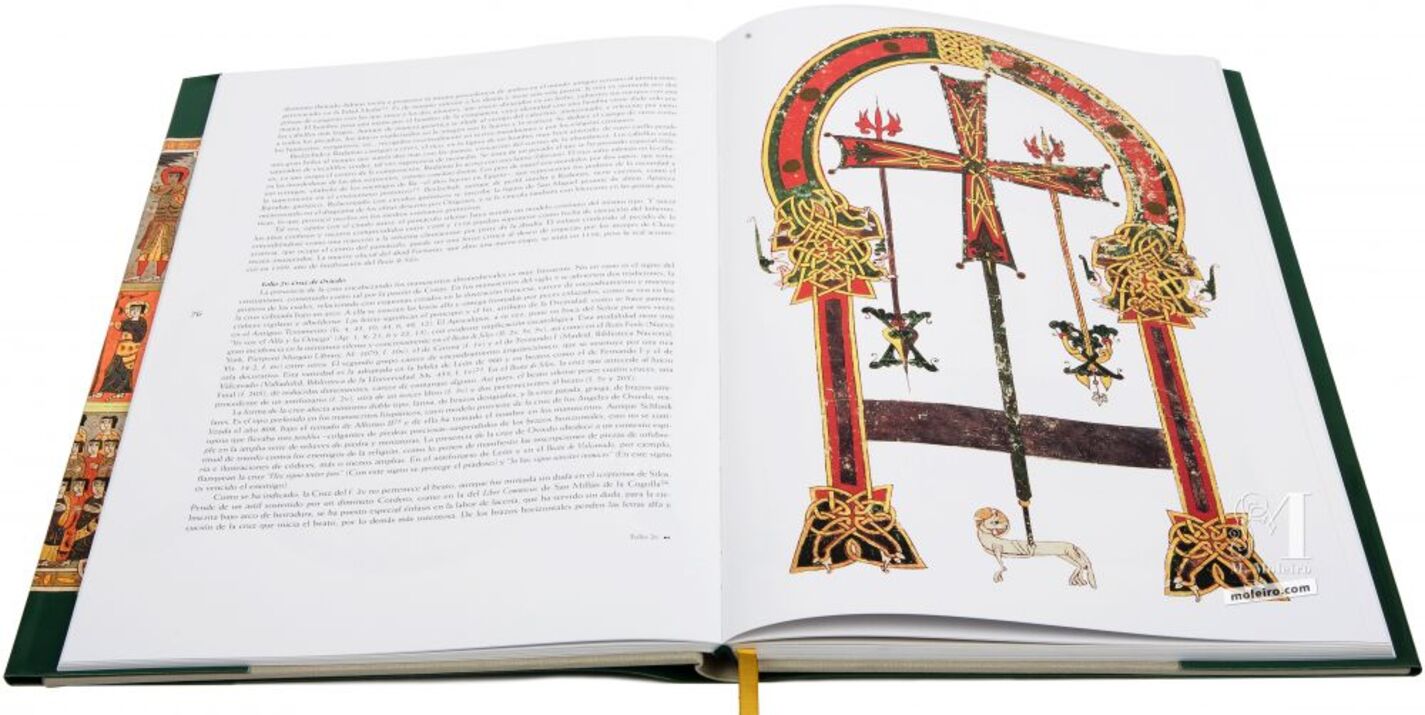
Crosses are often found at the beginning of Early Medieval manuscripts. Not in vain is it the symbol of Christianity, established as such by the Passion of the Christ. The crosses themselves are of two types: the Latin cross with arms of different lengths, and the patté Greek cross with arms of similar lengths which is the type preferred in Hispanic manuscripts, the model for which stems from the Oviedo Angel Cross made in the year 808 during the reign of Alphonse II.
The presence of the cross is the outcome of a spiritual context of triumph over the enemies of religion. It is set within a horseshoe arch and particular attention has been paid to the interlace motifs which were undoubtedly used when producing the cross found at the beginning of the Beatus, which is, in other respects, more ostentatious. The letters alpha and omega are suspended from the horizontal arms. Unlike the cross and the frame as a whole, the haloed lamb is completely irrelevant and, apart from the halo which is painted yellow and red, is simply outlined in red and black, displaying no plasticity whatsoever. The red hues contrast with the yellow and brown tones, endowing the image with a special colourist feel.
Ángela Franco Mata
Head of Department of Medieval Antiquities
Museo Arqueológico Nacional